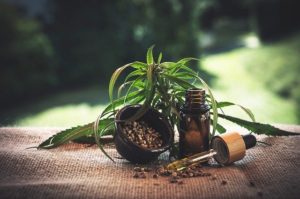Essential Things You Need To Grow Cannabis

As cannabis legalization is spreading across the US, Europe, and other parts of the world, it’s best to grow your weed. Marijuana is called weed for a reason. It grows fast and is simple to germinate like a weed.
You may be asking yourself why growing seems challenging and why you require much equipment. The truth is, if you plant a cannabis seed in your backyard and forget about it, it’ll germinate and grow well. However, it may not give you impressive yields. That’s why you require growing details and equipment.
To maximize your yields in terms of potency and size, your plants need excellent growth conditions. This starts by visiting an online shop like i49 to buy seeds.
Top Factors Affecting Your cannabis Growing
Cannabis cultivation is influenced by a variety of factors, and successful growing depends on careful management of these elements. Here are some of the top factors that can affect your cannabis growing:
- Light: Light is crucial for cannabis growth. Cannabis plants require a balance of light and dark periods. Indoor growers often use high-intensity discharge (HID) lamps, fluorescent lights, or LEDs to provide the necessary light spectrum and intensity.
- Temperature: Cannabis plants have specific temperature requirements for optimal growth. Generally, they thrive in temperatures between 70-85°F (21-29°C during the day and 58-70°F (14-24°C) during the night.
- Humidity: Humidity levels in the growing environment play a critical role in preventing mold, mildew, and other issues. Vegetative stages typically require higher humidity (40-70%), while flowering stages require lower humidity (40-50%).
- Air Circulation: Proper airflow is essential to prevent the development of mold and mildew and to ensure that CO2 and oxygen are evenly distributed to the plants.
- Nutrients: Cannabis plants need a variety of nutrients, including nitrogen, phosphorus, and potassium, as well as micronutrients like calcium, magnesium, and iron. Nutrient imbalances can result in stunted growth or nutrient deficiencies.
- pH Levels: Maintaining the correct pH level in the growing medium (soil or hydroponics) is crucial for nutrient uptake. Cannabis typically grows best in soil with a pH level between 6.0 and 7.0.
- Watering: Overwatering or underwatering can harm cannabis plants. It’s important to provide a consistent watering schedule while allowing the soil to dry slightly between waterings. Proper drainage is also crucial to prevent root rot.
- Strain Selection: Different cannabis strains have unique growth characteristics, including height, flowering time, and resistance to pests and diseases. Selecting the right strain for your growing conditions is essential.
- Pests and Diseases: Cannabis is susceptible to a range of pests and diseases. Regular monitoring and preventive measures, such as using neem oil or ladybugs for pest control, are important.
- Training and Pruning: Techniques like topping, low-stress training (LST), and high-stress training (HST) can be used to shape and manage the growth of the plants, ensuring proper light exposure and airflow.
- Container Size: The size of the container or pot can affect the root system’s development. Smaller pots can limit the plant’s growth potential, while larger pots can allow for bigger plants.
- Environmental Control: If you’re growing indoors, you need to control factors such as humidity, temperature, and CO2 levels. Invest in equipment like dehumidifiers, heaters, and CO2 generators to maintain optimal conditions.
- Genetics: The genetic makeup of the cannabis plant can impact its growth and flowering characteristics. Some strains are better suited for specific conditions, so selecting the right genetics for your environment is crucial.
- Harvest Timing: Harvesting at the right time is essential to ensure the desired potency and flavor of the buds. Trichome color and pistil development can be used as indicators.
- Curing and Drying: After harvesting, proper curing and drying are vital to preserve the quality and flavor of the final product. This process can take several weeks and requires controlled conditions.
By paying careful attention to these factors and making adjustments as needed, you can increase the likelihood of a successful cannabis growing operation.
Which Cannabis Strains Should You Choose?
The choice of cannabis strains you should grow depends on your preferences, growing environment, and desired effects. There are three primary categories of cannabis strains: Indica, Sativa, and hybrids, each offering different characteristics.
Indica Strains:
- Appearance: Indica plants are typically shorter and bushier with broader leaves.
- Effects: Indicas are known for their relaxing and sedative effects. They are often chosen for their potential to relieve pain, anxiety, and insomnia.
- Growing Traits: Indica strains tend to have a shorter flowering period and are well-suited for indoor cultivation. They are generally hardy and more resistant to pests and diseases.
Popular Indica strains include “OG Kush,” “Northern Lights,” and “Purple Punch.”
Sativa Strains:
- Appearance: Sativa plants are taller with thinner leaves and take on a more “upright” appearance.
- Effects: Sativas are known for their energizing and uplifting effects. They are often chosen for increased creativity and focus.
- Growing Traits: Sativa strains typically have a longer flowering period and may require more vertical space for cultivation. They thrive in outdoor settings with ample sunlight.
Popular Sativa strains include “Jack Herer,” “Sour Diesel,” and “Durban Poison.”
Hybrid Strains:
- Appearance: Hybrid plants combine characteristics of both Indica and Sativa strains. The appearance can vary widely depending on the specific hybrid.
- Effects: Hybrids offer a range of effects, depending on the specific genetics. They can be tailored to provide a balance of relaxation and energy.
- Growing Traits: The growing traits of hybrids depend on the parent strains used in the hybridization. Some hybrids may be better suited for indoor growth, while others may thrive outdoors.
Popular hybrid strains include “Blue Dream,” “Girl Scout Cookies,” and “Gorilla Glue.”
Essential things to grow Marijuana
Clones Or Seeds
If you know someone who grows cannabis, they can help you get clones. But if you aren’t lucky, you need to buy some marijuana clones or seeds and germinate them. There are various types of seeds that you can acquire from a seed bank. Most people prefer growing feminized seeds because they have fewer chances of producing male or hermaphrodite plants.
Some people also recommend purchasing seeds from an overseas seed bank because growing weed is considered a federal crime in some US states. Also, transporting seeds across different states may land you in some legal problems, though the risks are low.
When buying seeds, you should acquire those with a 100% germination guarantee. That way, you’ll avoid wasting money on seeds that aren’t viable. Ensure you go through the reviews of an online seed bank before making a purchase. Most seed banks strive to sell genuine and viable seeds. However, some traders may be out to con you by selling you cheap and unproductive seeds. You can avoid them by always being on the lookout.
Space
Seeds are a must-have to grow cannabis plants. But without space to develop them, it’s needless to buy them in the first place. Your growth space can take various forms. You could use your basement, a warehouse, closet, shipping container, or any other space you can imagine.
If you choose to grow your cannabis indoors, you’ll require a space that can enable you to control the environment and keep out pests and prying eyes. Though growing marijuana is legal, it’s best only to let a few people know you’re growing it. The more people know about it, the higher the chances of theft.
Your space may require ventilation and power. Its walls may also need a covering made from a reflective material. If you’re a small-scale grower, a tent can be ideal for you. Tents enclose plants in a suitable environment and are perfect for indoor growing. There’s no harm in growing plants in the whole tent. However, you need to leave some space to allow you to get in and tend your plants.
Medium And Container
You can grow your cannabis in soil, container, or other growth media. The most popular way of growing cannabis is through hydroponics. This technique involves feeding the plants’ roots with nutrients through circulating water.
Hydroponics can give you bigger yields and accelerate growth. However, it’s more challenging to set up and needs more attention. So if you’re a beginner, this may not be best for you. Instead, you can grow your plants in soil.
Growing cannabis in soil is much simpler than using a hydroponic system. You may require a garden or container filled with soil to grow your plants. Expert growers recommend mixing the soil with the proper nutrients before planting the seeds. If you choose to use a container, it’s best to use fabric pots. That’s because they enhance growth more than ceramic or plastic pots.
You can use small containers to grow seedlings. Once the plants have outgrown the container, transfer them to a large pot and keep moving them to larger pots till they mature. That way, you’ll boost their growth.
Cannabis plants can grow very big if placed in a pot that’s large enough. Ensure that you use soil that most cannabis growers recommend. It should be full of nutrients that the plants need.
Water
It’s fine to use tap water for your plants. However, you should examine the chemicals in it. Most municipalities provide water quality information. You should find out how much mineral content but has. The best water for your plants should have no chlorine and less than 400ppm mineral content. You can know the mineral content in your water by buying a TDS meter and testing the waters. Unfortunately, the results given by this meter aren’t always reliable.
If your water has a high mineral content, it’s advisable to use complex water nutrients. If it has chlorine, let it sit for more than 24 hours before using it on your plants. That’ll allow all the chlorine to evaporate.
pH Balance And Nutrients
Cannabis plants are greedy. They consume a lot of nutrients and use them to grow faster. It’s advisable to buy a nutrient solution that’s created for growing marijuana. That way, you’ll ensure that your plants get the correct amounts of the proper nutrients. Always begin by using half of the recommended nutrient amounts before adjusting to the total amount.
You also need to check a nutrient deficiency chat to determine whether there are any deficiencies or excesses. The soil you grow your cannabis in should have a pH ranging from 6.0 to 7.0. Digital meters or strips can help you test pH.
Lights
To ensure that your cannabis grows effectively, you need lights. Most growers use LED grow lights. The good news is that these lights’ prices have gone down, and you can buy quality lights at an affordable price.
Fluorescent lights may be best for small-scale growing. If you use them for a large space, they may be expensive because you’ll require many bulbs. Always put the lights on a timer to switch on and off at specific times of the day. That way, they’ll mimic the natural daylight conditions that the cannabis plants would face outdoors.
How long does it take to grow weed?
The time it takes to grow cannabis (often referred to as “weed”) can vary significantly depending on several factors, including the strain, growing environment, and desired outcome. Here are some general timelines for the different stages of cannabis cultivation:
Germination:
Germinating cannabis seeds typically takes 1 to 7 days. Some growers germinate seeds in a damp paper towel, while others use methods like pre-soaking seeds in water.
Seedling Stage:
After germination, cannabis plants enter the seedling stage. This stage usually lasts 2 to 3 weeks. During this time, the plants develop their first few sets of leaves and require a lot of care and attention.
Vegetative Stage:
The vegetative stage can last anywhere from 3 to 16 weeks or longer, depending on your goals. If you want small plants for indoor cultivation, you might have a shorter vegetative phase. For larger, outdoor plants, the vegetative stage can be extended.
Flowering Stage:
The flowering stage is when the cannabis plants develop buds. This phase typically lasts 7 to 14 weeks. The specific duration depends on the strain. Some strains have a shorter flowering period, while others take longer.
Harvesting:
Harvesting usually occurs when the trichomes on the buds have reached the desired level of maturity. This typically happens 8 to 12 weeks into the flowering stage but can vary based on the strain and growing conditions.
Drying and Curing:
After harvesting, the drying and curing process can take 2 to 8 weeks. Proper drying and curing are essential for preserving the flavor and potency of the buds.
In total, from germination to harvest and curing, the entire process can take anywhere from 3 to 7 months. The actual time may vary depending on factors like the strain’s genetics, the growing environment (indoor or outdoor), and the grower’s experience level.
Conclusion
Getting maximum harvest from your cannabis plant may seem challenging. But with these essential things, it can be easy.






